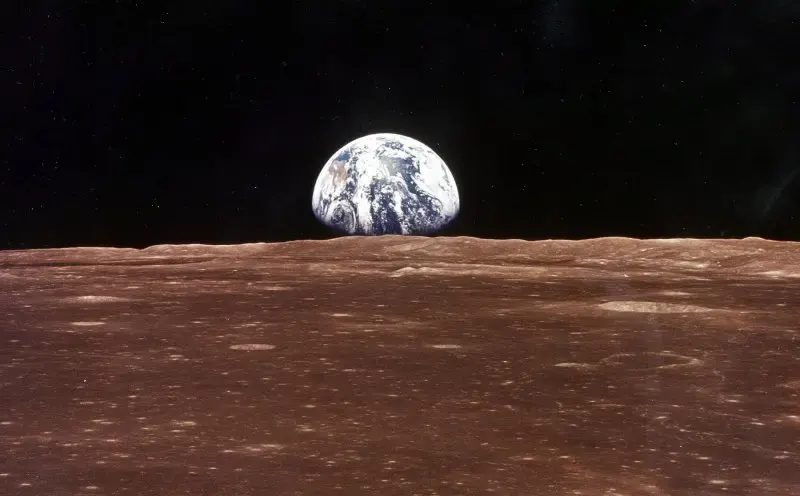Why Earth's Rotation Is Accelerating This Summer

If you're the type of person who accomplishes a lot, you appreciate every one of the 86,400 seconds that comprise a day. On July 9, July 22, and August 5, you will not receive your full complement of seconds. On these days, the Earth's rotation will be accelerated measurably—and, thus far, unaccountably—by 1.3 to 1.5 milliseconds from the ordinary 24 hours.
A millisecond, or one thousandth of a second, is admittedly insignificant—an eyeblink takes approximately 100 milliseconds. However, with atomic clocks tracking the Earth's rotational speed so closely that the International Earth Rotation and Reference Systems Service (yes, there is such a thing) must add a leap second to the year every year and a half to account for any increase in the planet's speed, every millisecond counts. So, what's causing the abrupt acceleration, and what effect might it have?
The shortest day in history
Around the world, 450 atomic clocks are in operation, recording time with an accuracy of around 1 second per 100 million years. The clocks serve a purpose other than just maintaining time. Everything from weather satellites to GPS satellites, telecommunications, nuclear missiles, and other weapons of war requires precise timing to function effectively. So when both astronomers and clock operators observe that the atomic ticks are out of sync with the Earth's rotation, they take note.
According to Date and Time, the shortest day ever recorded since atomic clocks were first used in the 1950s occurred last year, on July 5, when the Earth lost 1.66 milliseconds. Three years ago, on June 30, 2022, the day arrived in 1.59 milliseconds according to the 24-hour wire. However, astronomers and clock experts forecast three short days over the following two weeks, making this summer even more unusual.
What Causes Earth to Spin Faster?
There are several reasons why the Earth's speed may be altering in this way. However, it is unclear which explanation is responsible this time.
The most likely cause is the moon's location. The moon's distance from Earth changes constantly, since it follows an elliptical orbit around the planet. At its closest approach, or perigee, the moon is only 224,000 miles away. At its furthest point—or apogee—the gap expands to 251,655 miles. The moon will be at or near apogee on the three rapid days this summer, which is surprising given that lunar gravity causes the Earth to slow down rather than speed up when the moon is farther away.
The moon's orbit is not only elliptical, but also cockeyed, with an angle ranging from 18° to 28° relative to the Earth's equator. The sharper the angle, the faster the Earth revolves, with lunar gravity speeding things up and counteracting the braking impact that lunar apogee generally has. This summer, on the three days in question, the moon will be nearing its 28° peak.
The moon isn't the only thing that can shorten our days. Earthquakes can also reposition subsurface mass, causing the Earth to accelerate or slow down in the same manner that a figure skater can modify the pace of her spin by tucking in or extending her arms. In 2005, an earthquake in Indonesia displaced the Earth's polar mass by one inch to the east, shortening the day by 2.68 microseconds (millionths of a second). No big earthquakes have happened recently, ruling out temblors as the cause of the current acceleration.
Is Climate Change Affecting Earth's Rotation?
Climate change may also play a role, as it appears to do regularly. Last year, two NASA-funded studies discovered that since 2000, melting glaciers have caused the planet's axis—or the center point of its spin—to shift by around 30 feet, affecting the speed of rotation. The hitch is that in this case, the alteration causes the Earth to slow down rather than accelerate by around 1.33 milliseconds every century. If current rates of warming continue, the duration of our days is expected to grow by 2.62 milliseconds by the end of this century.
Other processes, such as rising ocean levels and atmospheric warming (and hence swelling), can also contribute to a minor increase in planetary diameter. Even the springtime flowering of trees can have an impact. "In the northern summer, the trees get leaves," geophysicist Richard Holme of the University of Liverpool told Live Science. "This means that mass is moved from the ground to above the ground, further away from the Earth's spin axis." In all of these circumstances, however, the effect is to slow the Earth rather than hurry it up.
So scientists return to lunar gravity as the cause of the current acceleration—a reason not to be concerned about the slightly shorter days. The Earth and the Moon have been dancing for nearly 4.5 billion years, and it has always been a stable dance. Here's betting they'll be around for another few billion years.